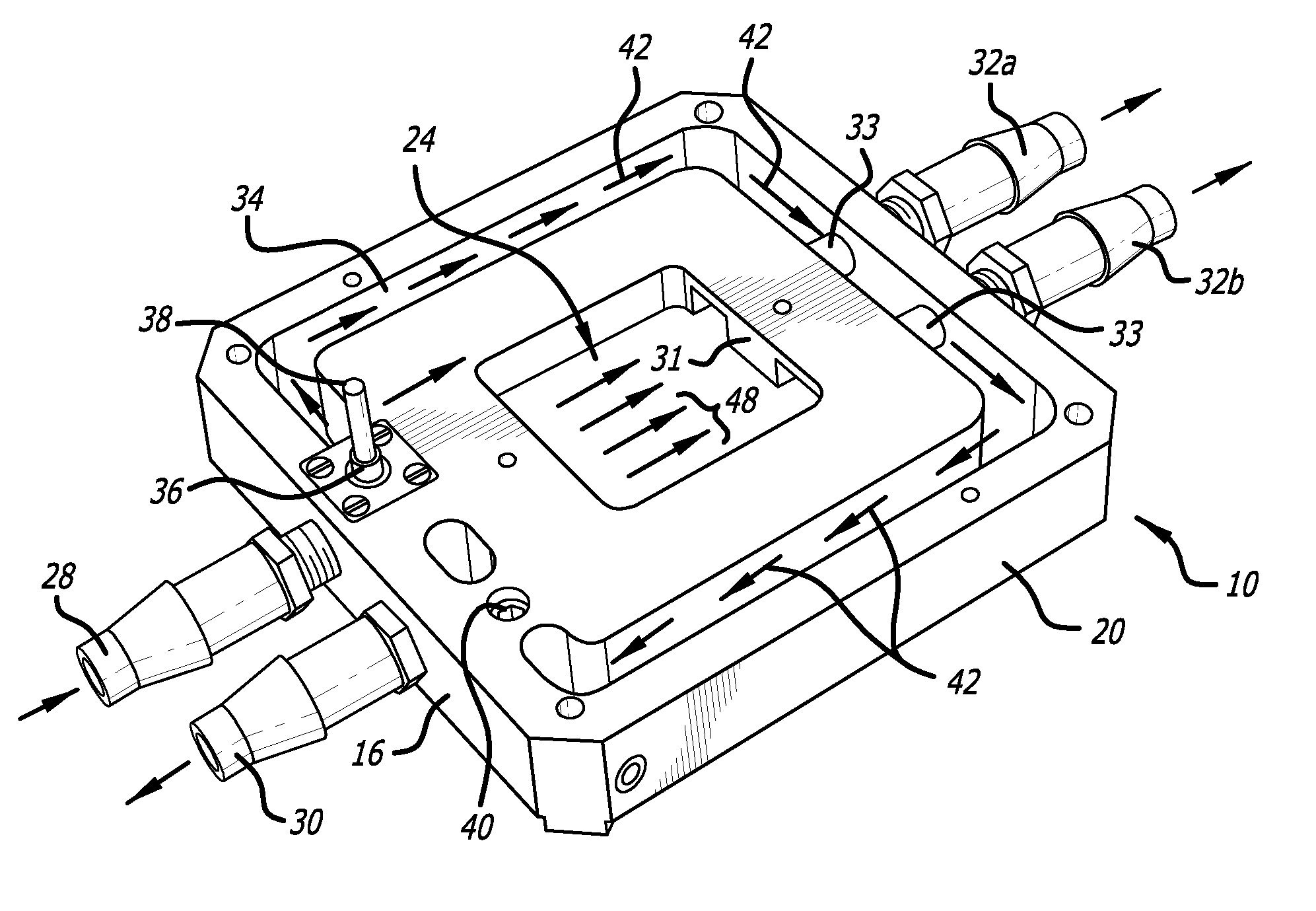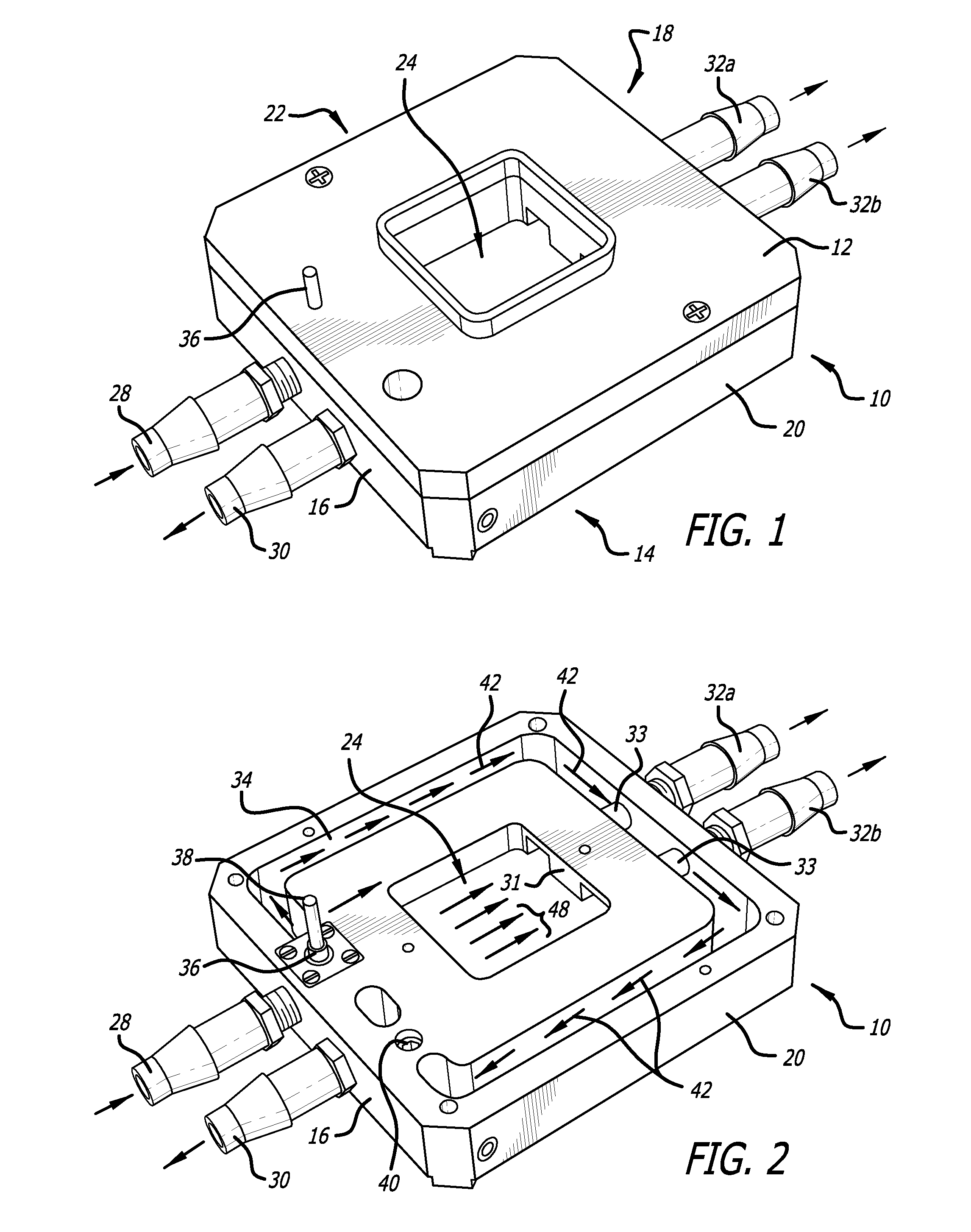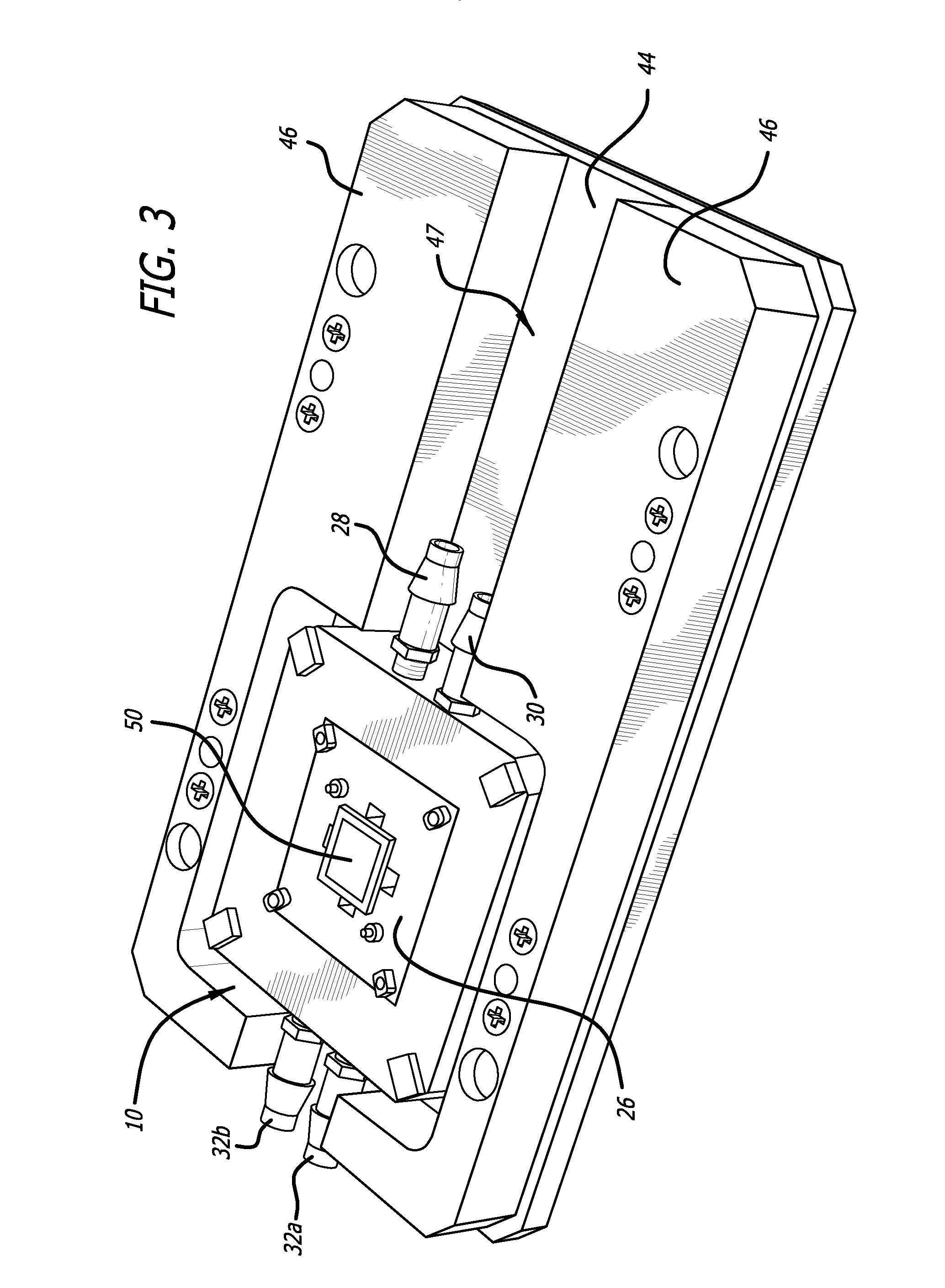Thermal chamber for IC chip testing
a technology of ic chips and chambers, which is applied in the direction of washstands, lighting support devices, instruments, etc., can solve the problems of requiring tight temperature control difficult control of the temperature of the ic chip, and slow down, so as to reduce the preheating/precooling time, reduce the downward force of the chip with the socket, and reduce the effect of preheating/precooling
- Summary
- Abstract
- Description
- Claims
- Application Information
AI Technical Summary
Benefits of technology
Problems solved by technology
Method used
Image
Examples
Embodiment Construction
[0016]The present invention is a thermal chamber that can be used to control the temperature of an IC chip under test. The temperature control uses a flow of fluid, which is preferably a cooled or heated gas such as air, nitrogen, or the like. The thermal chamber is designed to hold a chip socket, that itself contains an IC chip to be tested. The thermal chamber is mounted to a docking interface plate that includes a thermal insulator surrounding the thermal chamber. A work press engages a valve actuator on the thermal chamber to introduce fluid across the socket / chip surface.
[0017]FIG. 1 is a perspective view of the thermal block 10 that defines the thermal chamber. The thermal block 10 has a top side 12 and a bottom side 14, and front 16 and rear 18 walls along with first and second side walls 20,22. An aperture 24 in the interior of the block 10 allows a chip socket 26 to be inserted and held therein. The front wall 16 of the block 10 includes first and second nozzles 28, 30 that...
PUM
 Login to View More
Login to View More Abstract
Description
Claims
Application Information
 Login to View More
Login to View More - R&D
- Intellectual Property
- Life Sciences
- Materials
- Tech Scout
- Unparalleled Data Quality
- Higher Quality Content
- 60% Fewer Hallucinations
Browse by: Latest US Patents, China's latest patents, Technical Efficacy Thesaurus, Application Domain, Technology Topic, Popular Technical Reports.
© 2025 PatSnap. All rights reserved.Legal|Privacy policy|Modern Slavery Act Transparency Statement|Sitemap|About US| Contact US: help@patsnap.com



